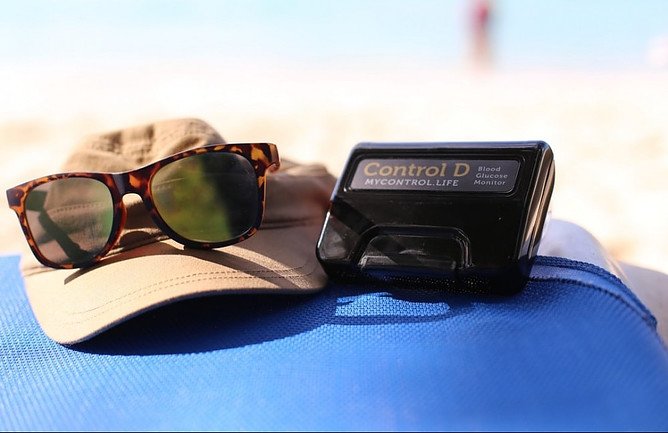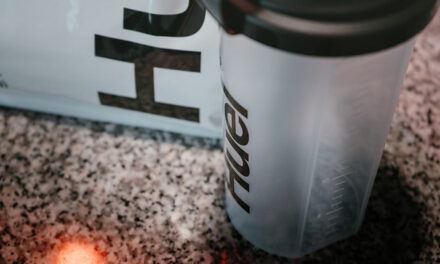Those who have diabetes are more prone to feeling heat than those who do not have diabetes. Extreme fluctuations in body temperature, specifically the heat, can be extremely dangerous for those with diabetes.
Heat directly affects blood glucose levels in the body, making temperature fluctuations particularly dangerous for those people who live with diabetes who are traveling or experience higher temperatures due to the change in season.
Long-term complications from diabetes like damaged blood vessels and nerves can directly affect the sweat glands. This means that those with diabetes may not able to cool themselves in the same way as non-diabetics. Other complications like dehydration, which affects blood glucose levels, and insulin metabolism changes can have disastrous consequences for those with diabetes too following changes of heat in the environment.
But, it isn’t only the external temperature that needs to be taken into account. Humidity, or the amount of moisture in the air, directly affects the body’s ability to cool itself. The more humid an environment is, the more likely it is that a person will not be able to cool themselves. Checking the heat index and humidity index becomes essential for those wanting to manage their diabetes properly in a new environment.
Factors such as heat stroke, heat exhaustion and its symptoms directly affect diabetics far more readily than those who do not have diabetes. These symptoms can have devastating effects on diabetics blood glucose levels and can inhibit the absorption of life-saving insulin.
In this article, we are about to explore the Things to Do When Acclimatizing to Heat and Things to Avoid for Heat Acclimatization in people with diabetes.
Tip: Here are the Tips for Air, Sea and On-Road Travel with Diabetes.
What is Heat Acclimatization?
Heat acclimatization is the physical response the body has in the ability to cope with exposure to heat. When the body is exposed to heat, a complex chain of events occurs internally in order for the body to cope with the heat. These changes do not happen quickly and usually take seven to fourteen days for complete adaptation to occur.
These adaptations include changes to;
- Heart rate changes
- Internal core body temperature changes
- Changes in external skin temperature
- Electrolyte loss and concentration
- How much energy is used when the body is exerted
- Blood glucose levels fluctuations
While everyone goes through a heat acclimatization period, for those with diabetes, the natural body adaptation process can wreak havoc. Knowing how to keep diabetes in check and under control while acclimatizing to heat changes, as well as changing the storage and administration of medications can make the process a little easier.
Tip: Don’t mix-up heat acclimation with fever and hyperthermia. In some people, Fever can cause Hallucinations.
How to Adopt to the Heat with Diabetes?
Acclimatizing to a change in temperature, whether sudden because of travel or gradual due to seasonal changes is essential; especially for people with diabetes. Knowing what your body is going through, understanding the acclimatization process and ensuring that one stays healthy, all make the process a little easier to handle.
Blood sugar levels have a tendency to spike or drop rapidly in higher temperatures, and for people with diabetes close monitoring of blood glucose levels is essential.
Symptoms such as excessive sweating, insufficient sweating, dizziness, tiredness, lethargy, shakiness, blurred vision, extreme hunger and mood swings
should not be ignored.
Acclimatizing to heat can be difficult, but the benefits far outweigh the potential health risks.
What to Do to Avoid a Heat Stroke with Diabetes?
1. Drink plenty of water – Dehydration plays a massive role in how the body metabolizes insulin.
2. Avoid any liquid or food that will cause sugar levels to spike – These include caffeinated drinks, sports and energy drinks, dried fruits, sugary snacks and foods high in carbohydrates.
3. Ensure that you check your blood glucose levels regularly, and if you need to be active, ensure that you check before, during and after your activities.
4. Where necessary, discuss medication dosage changes with your doctor before entering a higher temperature zone.
5. Wear loose-fitting clothing in light colors and diabetes-friendly footwear to allow air to move through easily.
6. Wear a hat to shield your head and sunscreen to protect your skin against sunburn. Sunburn directly affects the body’s internal core temperature and can severely alter blood glucose levels.
7. Avoid going barefoot to shield the body from sudden increases in heat that directly affect the skin.
8. Avoid physical activity as much as possible while the body acclimatizes to the higher temperatures. Not only does physical activity affect the body’s core temperature, but it raises the heart rate and can both lower or increase blood glucose levels.
9. Try to stay cool down in air-conditioned or fanned buildings.
10. Stay in the shade wherever possible to ensure that the body isn’t directly exposed to the sun.
11. Have cooling methods such as ice packs and iced towels on hand to assist in bring the body temperature down.
Tip: Here are the Signs and Symptoms of High Blood Sugar in Women, Men and Children.
Tip: It’s worth being aware of Diabetes Gastroparesis and Food List for Diabetes Gastroparesis. After all, these Food Myths about Diabetes are the most important to understand for Healthy Eating for Type 2 Diabetes.
Why Diabetes Patients Prone to Heat Acclimatization?
Being in the sun with long periods of inactivity, sudden fluctuations in external temperature and travel to hotter, more humid climates can all lead to the body needing to acclimatize to higher temperatures. For people with diabetics, however, this means that controlling the disease can be made tougher.
With heat acclimatization:
- Your blood glucose levels will inevitably become higher than usual.
- Insulin will be absorbed quicker, meaning the chances for a hypoglycemic episode or hypo, are also much higher.
- Because diabetes patients often suffer from damage to blood vessels that can directly affect the sweat glands, the chance of overheating is much higher than those not suffering from the disease.
- The inability to sweat or sweating too much means that a person runs the risk of suffering from heat exhaustion directly affecting insulin levels and the way in which the body metabolizes insulin.
Symptoms such as headaches, dizziness, nausea, vomiting, lethargy and muscle cramps are all common for those who are healthy and who have found themselves in a position where they have heat exhaustion. For people with diabetes, however, these symptoms can mean something far more dangerous is occurring in the body.
A rise in external temperature creates a physiological response that assists the body in acclimatizing to the change in temperature. These responses directly affect the body’s ability to metabolize blood sugars. If the heat is severe, the body will sweat, causing dehydration and a rise in blood glucose levels kicking in the body’s need to urinate frequently, destabilizing blood glucose levels further. Once dehydration is in effect, the blood supply to the skin reduces dramatically lessening the absorption of insulin once it is administered.
Tip: It’s worth noting the difference between migraine headache symptoms from headache caused by heat-acclimation.
Does the Heat Affect Blood Sugar?
Regardless of the reason for the increase in external temperature and the fact that everyone should be aware of the dangers of being in the heat for too long. For people with diabetes; however, the heat can cause severe blood sugar spikes or plummets in higher temperatures.
There are a variety of reasons why blood sugar spikes or plummets in higher temperatures, but the most common reasons are:
High Blood Sugar
Heat can spike blood sugar levels rapidly is the body is not properly hydrated. During the dehydration process, blood glucose becomes more concentrated because of a direct decrease in the blood flow to the kidneys. The kidneys, now deprived of adequate blood supply, begin to slow down the process of removing excess glucose in urine.
Low Blood Sugar
On the opposite spectrum is low blood sugar. For some, high heat plummets blood glucose levels especially when a person has engaged in physical activity. Heat and physical exertion cause the body to expand its blood vessels, increasing blood supply and speeding up the absorption of insulin in the body. For those who have diabetes, this process can cause hypoglycemia.
Diabetes and Heat Intolerance | Does Body Heat Affect Blood Sugar?
As mentioned above, diabetes can cause the body to lose water quickly. For those who have diabetes, escalations in temperature affect their quality of life more than those who do not suffer from the disease.
Those who suffer from fluctuating glycemic control and other diabetes complications are at a very high risk of significant health complications.
Hot weather directly affects the body’s ability to produce and use insulin effectively. Coupled with dehydration, blood glucose levels can increase sharply due to frequent urination and excessive sweating. Heatstroke or heat illness can come on rapidly, which has the ability to become life-threatening. Blood sugar needs to be monitored extremely closely in higher temperature conditions and steps taken to ensure that hydration levels are correct and that medications are stored correctly for administration.
Hypoglycemic and hyperglycemic episodes do become more frequent in higher temperatures as blood glucose levels rise and fall constantly. This coupled with dehydration symptoms and decreased blood flow to the skin, can mean that inadequate levels of insulin are being injected in the case of a blood sugar episode.
Ensuring that people with diabetes are adequately hydrated and remain cool during increased temperatures can help the overall management of heat intolerance in diabetes, though.
Signs of Heat Acclimation in Diabetes
Heat acclimatization can cause both hypoglycemic, (low blood sugar) and hyperglycemic (high blood sugar) episodes. The symptoms of these may vary from diabetic to diabetic, but close monitoring of blood glucose levels should occur if any of these symptoms are present.
Hypoglycemia (Low Blood Sugar)
Hypoglycemia symptoms are very similar to heat exhaustion. Diabetics should never assume that they are just feeling tired or irritable from the heat.
These symptoms include;
- Sweating, excessive or not enough
- Shakiness
- Dizziness
- Tiredness or lethargy (If you are diagnosed with Chronic Fatigue Syndrome, you may eligible for a Disability Claim)
- Blurred vision / seeing auras
- Excessive hunger
- General irritability
Hyperglycemia (High Blood Sugar)
Symptoms of Hyperglycemia responding to a heat variation are below.
- Increased thirst
- Headaches
- Trouble concentrating
- Blurred vision
- Frequent urination
- Weakness and a feeling of being tired
- Decrease in appetite
Heat and Diabetic Medication and Testing Equipment
Insulin that is exposed to extreme heat becomes ineffective and would cause blood sugar spikes to the unsuspecting user. Test strips and blood glucose meters can also be severely compromised if exposed to heat and should be kept according to label instructions.
Further to this, the body site that the person with diabetes uses for the administration of insulin should be thought through carefully. The injection site should be well hydrated, and as close to normal body temperature as possible. The closer to body temperature the site is, the easier the body will absorb the insulin.
Tips on Things to Do When Acclimatizing to Heat | Tips on Things to Avoid for Heat Acclimatization?
There are some tips and tricks to assist people with diabetics in acclimatizing to the heat successfully. The key is to consistently and carefully check blood glucose levels and ensure that the diabetic is successfully managing any symptoms that may arise.
1. Drink Plenty of Fluids
Staying hydrated is key, especially if performing physical activities. Carrying small bottles of water and electrolyte sachets while playing sports or not at home will help to keep electrolyte and hydration levels where they need to be.
2. Make Insulin Adjustments
Ensure that your healthcare provider is aware of the potential change in heat when travelling. Discussing your environment and the potential ambient temperature will help your doctor supply adequate information on how to adjustments to your insulin dosage while acclimatizing.
3. Increase Testing
Because hot temperatures will cause blood glucose levels to fluctuate, it is important to test levels more frequently. This helps diabetics to manage their BG levels better and keep them at a stable level.
During periods of physical activity, levels need to be tested frequently and should continue to be tested for several hours after the activity has stopped.
4. Keep Treatment Options Close at Hand
Ensure that you keep your insulin close by and correctly stored, but your care pack should also include glucose tabs or glucose gel for low blood sugar.
Taking some snacks to replace full meals also serve as a healthy way to prevent blood sugar lows.
5. Protect Your Medication
Insulin and glucagon packs should be packed properly and clearly marked, in case one needs assistance. Some cars have plug adapters that can accommodate car cooler units. These keep supplies at the correct storage temperatures. Insulin pumps should be kept in optimal temperatures and out of the heat.
Tip: Here’s how to select an excellent doctor to manage your diabetes.
Other Considerations
6. Dry Heat vs Humidity
While it is important to stay hydrated and closely monitor blood glucose levels in all elevated temperature situations, humidity can create more challenges for diabetics. With low humidity, sweat evaporates more easily, which means the body cools off more easily. In humid conditions, sweat dries more slowly compounding the issue of overheating.
7. Not All Liquids Are Good
Water is always the best remedy to keep people with diabetics
hydrated, but other non-caffeinated iced teas are also an option.
Any liquid that has a diuretic effect or is high in caffeine or sodium should be avoided as they will ultimately dehydrate a person.
Drinks to avoid include alcohol, soda, energy drinks, coffee, milk and regular caffeinated teas.
Sports drinks can help to replace electrolytes but should be checked for the sugar content. Most sports drinks have a very high sugar content and should perhaps be replaced with electrolyte sachets in a bottle of water.
Tip: Essential oils can have a soothing effect on your diabetes.
Tip: Dario Glucose Monitor is a trendy innovation of the year.









